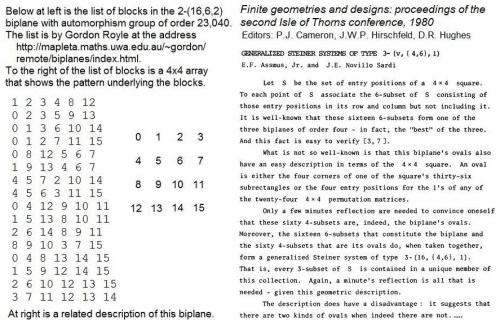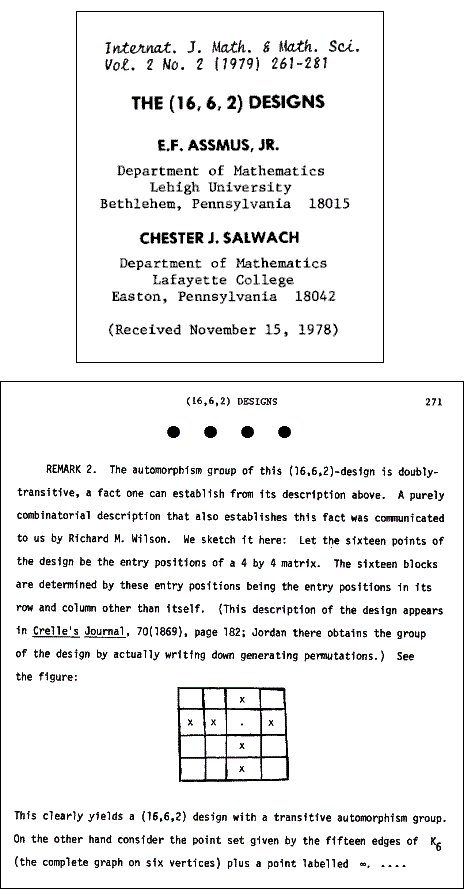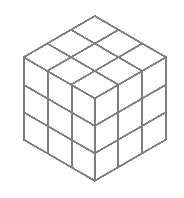Saturday, July 29, 2017
"The field of geometric group theory emerged from Gromov’s insight
that even mathematical objects such as groups, which are defined
completely in algebraic terms, can be profitably viewed as geometric
objects and studied with geometric techniques."
— Mathematical Sciences Research Institute, 2016:

See also some writings of Gromov from 2015-16:
For a simpler example than those discussed at MSRI
of both algebraic and geometric techniques applied to
the same group, see a post of May 19, 2017,
"From Algebra to Geometry." That post reviews
an earlier illustration —

For greater depth, see "Eightfold Cube" in this journal.
Comments Off on MSRI Program
Friday, July 28, 2017
In memory of a Disney "imagineer" who reportedly died yesterday.
From the opening scene of a 2017 film, "Gifted":
Frank calls his niece Mary to breakfast on the morning she is
to enter first grade. She is dressed, for the first time, for school —
- Hey! Come on. Let's move!
- No!
- Let me see.
- No.
- Come on, I made you special breakfast.
- You can't cook.
- Hey, Mary, open up.
(She opens her door and walks out.)
- You look beautiful.
- I look like a Disney character.
Where's the special?
- What?
- You said you made me special breakfast.
Read more: http://www.springfieldspringfield.co.uk/
movie_script.php?movie=gifted
|


Comments Off on Aesthetic Distance
Thursday, July 27, 2017
Michiko Kakutani in The New York Times —
"The detective story genre concerns the finding of clues
and the search for hidden designs, and its very form
underscores Mr. Pynchon’s obsession with conspiracies
and the existence of systems too complicated to understand."
— Review of Pynchon's Bleeding Edge , Sept. 10, 2013
Background: "Moss on the Wall," this journal on that date.
A less complicated system —
"Plan 9 deals with the resurrection of the dead."
— Bill Murray in "Ed Wood"

For The Church of Plan 9
(The plan , as well as the elevation ,
of the above structure is a 3×3 grid.)
Comments Off on Keeping It Simple
Monday, July 24, 2017
The above title was suggested by a film trailer quoted here Saturday —
" Jeremy Irons' dry Alfred Pennyworth:
'One misses the days when one's biggest concerns
were exploding wind-up penguins.' "
"Penguin Classics Deluxe Edition" describes, among other books,
an edition of the I Ching published on December 1, 2015.
Excerpt from this journal on that date —
|
Tuesday, December 1, 2015
Filed under: Uncategorized — m759 @ 9:00 PM
(Continued)
"The positional meaning of a symbol derives from
its relationship to other symbols in a totality, a Gestalt,
whose elements acquire their significance from the
system as a whole."
— Victor Turner, The Forest of Symbols , Ithaca, NY,
Cornell University Press, 1967, p. 51, quoted by
Beth Barrie in "Victor Turner."
(Turner pioneered the use of the term "symbology,"
a term later applied by Dan Brown to a fictional
scholarly pursuit at Harvard.)
. . . .
|
Related material —


Comments Off on Penguin Classics Deluxe Edition
Monday, July 17, 2017
At the Googleplex .
For those whose only interest in higher mathematics
is as a path to the occult …
Plato's Diamond and the Hebrew letter Aleph —


and some related (if only graphically) mathematics —

Click the above image for some related purely mathematical remarks.
Comments Off on Athens Meets Jerusalem . . .
Friday, July 14, 2017
Box-style I Ching, January 6, 1989 —

(Click on images for background.)
Detail:

See also yesterday's illustration of
the 1965 paperback edition
of Whittaker and Watson …

Detail:
 .
.
Comments Off on Squares
Tuesday, July 11, 2017
The New York TImes reports this evening that
"Jon Underwood, Founder of Death Cafe Movement,"
died suddenly at 44 on June 27.
This journal on that date linked to a post titled "The Mystic Hexastigm."
A related remark on the complete 6-point from Sunday, April 28, 2013 —
(See, in Veblen and Young's 1910 Vol. I, exercise 11,
page 53: "A plane section of a 6-point in space can
be considered as 3 triangles perspective in pairs
from 3 collinear points with corresponding sides
meeting in 3 collinear points." This is the large
Desargues configuration. See Classical Geometry
in Light of Galois Geometry.)
This post was suggested, in part, by the philosophical ruminations
of Rosalind Krauss in her 2011 book Under Blue Cup . See
Sunday's post Perspective and Its Transections . (Any resemblance
to Freud's title Civilization and Its Discontents is purely coincidental.)
Comments Off on A Date at the Death Cafe
Sunday, July 9, 2017
The title phrase is from Rosalind Krauss (Under Blue Cup , 2011) —
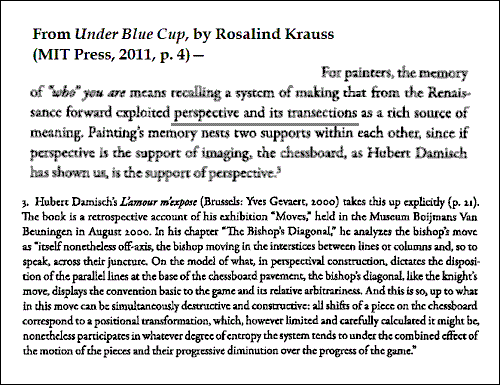
Another way of looking at the title phrase —
"A very important configuration is obtained by
taking the plane section of a complete space five-point."
(Veblen and Young, 1910, p. 39) —

For some context, see Desargues + Galois in this journal.
Comments Off on Perspective and Its Transections
Saturday, July 8, 2017

Related material now available online —

A less business-oriented sort of virtual reality —

For example, "A very important configuration is obtained by
taking the plane section of a complete space five-point."
(Veblen and Young, 1910, p. 39)—

Comments Off on Desargues and Galois in Japan
Thursday, July 6, 2017
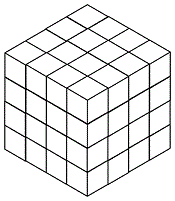
The 4x4x4 cube is the natural setting
for the finite version of the Klein quadric
and the eight "heptads" discussed by
Conwell in 1910.
As R. Shaw remarked in 1995,
"The situation is indeed quite pleasing."

Comments Off on A Pleasing Situation
Wednesday, July 5, 2017
The title refers to that of the previous post, "The Imaginarium."
In memory of a translator who reportedly died on May 22, 2017,
a passage quoted here on that date —

Related material — A paragraph added on March 15, 2017,
to the Wikipedia article on Galois geometry —
Comments Off on Imaginarium of a Different Kind
Friday, June 30, 2017
The previous post quoted one theologian on a book
by another theologian, saying its tone "is patronizing
and its arguments are hurriedly put together."
For a more leisurely sort of argument, see a 1995* remark
by a mathematician, Ronald Shaw, quoted here on the morning
of Tuesday, June 27, in an update at the end of the previous day's
post "Upgrading to Six" —
". . . recall the notions of Eddington (1936) . . . ."
* In "Finite Geometry, Dirac Groups and the
Table of Real Clifford Algebras," pages 59-99 of
R. Ablamowicz and P. Lounesto (eds.),
Clifford Algebras and Spinor Structures ,
Kluwer Academic Publishers, 1995.
Comments Off on Hurriedly Put Together
Monday, June 26, 2017
This post was suggested by the previous post — Four Dots —
and by the phrase "smallest perfect" in this journal.
Related material (click to enlarge) —

Detail —

From the work of Eddington cited in 1974 by von Franz —

See also Dirac and Geometry and Kummer in this journal.
Updates from the morning of June 27 —
Ron Shaw on Eddington's triads "associated in conjugate pairs" —

For more about hyperbolic and isotropic lines in PG(3,2),
see posts tagged Diamond Theorem Correlation.

For Shaw, in memoriam — See Contrapuntal Interweaving and The Fugue.
Comments Off on Upgrading to Six
Thursday, June 22, 2017
With a hat tip to Vinnie Mancuso —


Comments Off on Face Henge
Wednesday, June 21, 2017
Remark on conceptual art quoted in the previous post —
"…he’s giving the concept but not the realization."
A concept — See a note from this date in 1983:

A realization —

Not the best possible realization, but enough for proof of concept .
Comments Off on Concept and Realization
Tuesday, June 20, 2017
(Continued)
"For years, the AllSpark rested, sitting dormant
like a giant, useless art installation."
— Vinnie Mancuso at Collider.com yesterday
Related material —
Dormant cube —

Giant, useless art installation —
Sol LeWitt at MASS MoCA. See also LeWitt in this journal.
Comments Off on All-Spark Notes
Continuing the previous post's theme …
Group actions on partitions —

Cube Bricks 1984 —


Related material — Posts now tagged Device Narratives.
Comments Off on Epic
Monday, June 19, 2017


The above 1985 note was an attempt to view the diamond theorem
in a more general context. I know no more about the note now than
I did in 1985. The only item in the search results above that is not
by me (the seventh) seems of little relevance.
Comments Off on Dead End
Monday, June 12, 2017
The "bubble" passage in the previous post suggests a review of
a post from December 21, 2006, with the following images —


Update of 11:01 PM ET the same day, June 12, 2017 —

Related material for the Church of Synchronology —
From a tech-article series that began on Halloween 2006 and
ended on the date of the above Geometry's Tombstones post —



Compare and contrast (from a post of Feb. 27, 2017) —
“Lord Arglay had a suspicion that the Stone would be
purely logical. Yes, he thought, but what, in that sense,
were the rules of its pure logic?”
—Many Dimensions (1931), by Charles Williams

See also "The Geometry of Logic:
Finite Geometry and the 16 Boolean Connectives"
by Steven H. Cullinane in 2007.
Comments Off on Bubble
Wednesday, June 7, 2017
Comments Off on Three Things at Once
Tuesday, June 6, 2017
John Horgan and James (Jim) McClellan, according to Horgan
in Scientific American on June 1, 2017 —
|
Me: "Jim, you're a scholar! Professor! Esteemed historian of science! And yet you don’t really believe science is capable of producing truth."
Jim: "Science is stories we tell about nature. And some stories are better than other stories. And you can compare stories to each other on all kinds of grounds, but you have no access to"— he pauses for dramatic effect— "The Truth. Or any mode of knowing outside of your own story-telling capabilities, which include rationality, experiment, explanatory scope and the whole thing. I would love to have some means of making knowledge about the world that would allow us to say, 'This is really it. There really are goddamn electrons.'" He whacks the table.
|
See also posts tagged Dirac and Geometry and Glitch.

Comments Off on The Table
Sunday, June 4, 2017
From this journal on August 18, 2015, "A Wrinkle in Terms" —
For two misuses by John Baez of the phrase “permutation group”
at the n-Category Café, see “A Wrinkle in the Mathematical Universe”
and “Re: A Wrinkle…” —
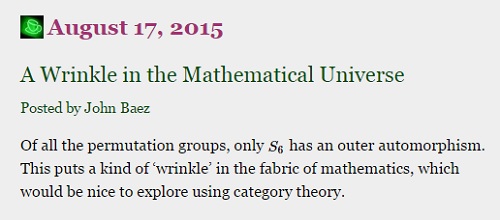

“There is such a thing as a permutation group.”
— Adapted from A Wrinkle in Time , by Madeleine L’Engle
* See RIP, Time Cube at gizmodo.com (September 1, 2015).
Comments Off on In Memory of the Time Cube Page*
Saturday, June 3, 2017
Or: The Square

"What we do may be small, but it has
a certain character of permanence."
— G. H. Hardy

* See Expanding the Spielraum in this journal.
Comments Off on Expanding the Spielraum (Continued*)
Monday, May 29, 2017
Line from "Vide," a post of June 8, 2014 —
Vide Classical Geometry in Light of Galois Geometry.
Recall that vide means different things in Latin and in French.
See also Stevens + "Vacant Space" in this journal.
Comments Off on The American Sublime
Friday, May 26, 2017

Mark Zuckerberg in a commencement speech
at Harvard yesterday —
"Movies and pop culture get this all wrong.
The idea of a single eureka moment
is a dangerous lie. It makes us feel inadequate
since we haven’t had ours. It prevents people
with seeds of good ideas from getting started.
Oh, you know what else movies get wrong about
innovation? No one writes math formulas on glass.
That’s not a thing."
The Thing from Taormina —

Comments Off on Taormina Test
Thursday, May 25, 2017
A post of March 22, 2017, was titled "The Story of Six."
Related material from that date —

"I meant… a larger map." — Number Six in "The Prisoner"
Comments Off on The Story of Six Continues
Tuesday, May 23, 2017
Comments Off on Pursued by a Biplane
Sunday, May 21, 2017
Tiptoe through the tulips with Rota and Erickson:
|
Attempts have been made to string together beautiful mathematical results and to present them in books bearing such attractive titles as The One Hundred Most Beautiful Theorems of Mathematics. Such anthologies are seldom found on a mathematician’s bookshelf.
The beauty of a theorem is best observed when the theorem is presented as the crown jewel within the context of a theory.
— Gian-Carlo Rota in Indiscrete Thoughts
|
See also Martin Erickson in this journal . . .

Comments Off on Rota on Beauty
Saturday, May 20, 2017
"But the Work shall not be wholly lost:
For it will, as he believ’d, appear once more,
In a new & more perfect Edition,
Corrected and Amended
By the Author." — Benjamin Franklin



Comments Off on Arrival
From a review of the 2016 film "Arrival" —
"A seemingly off-hand reference to Abbott and Costello
is our gateway. In a movie as generally humorless as Arrival,
the jokes mean something. Ironically, it is Donnelly, not Banks,
who initiates the joke, naming the verbally inexpressive
Heptapod aliens after the loquacious Classical Hollywood
comedians. The squid-like aliens communicate via those beautiful,
cryptic images. Those signs, when thoroughly comprehended,
open the perceiver to a nonlinear conception of time; this is
Sapir-Whorf taken to the ludicrous extreme."
— Jordan Brower in the Los Angeles Review of Books
Further on in the review —
"Banks doesn’t fully understand the alien language, but she
knows it well enough to get by. This realization emerges
most evidently when Banks enters the alien ship and, floating
alongside Costello, converses with it in their picture-language.
She asks where Abbott is, and it responds — as presented
in subtitling — that Abbott 'is death process.'
'Death process' — dying — is not idiomatic English, and what
we see, written for us, is not a perfect translation but a
rendering of Banks’s understanding. This, it seems to me, is a
crucial moment marking the hard limit of a human mind,
working within the confines of human language to understand
an ultimately intractable xenolinguistic system."
For what may seem like an intractable xenolinguistic system to
those whose experience of mathematics is limited to portrayals
by Hollywood, see the previous post —
van Lint and Wilson Meet the Galois Tesseract.
The death process of van Lint occurred on Sept. 28, 2004.
See this journal on that date.
Comments Off on The Ludicrous Extreme
Click image to enlarge.

The above 35 projective lines, within a 4×4 array —

The above 15 projective planes, within a 4×4 array (in white) —

* See Galois Tesseract in this journal.
Comments Off on van Lint and Wilson Meet the Galois Tesseract*
Friday, May 19, 2017
Comments Off on From Algebra to Geometry
Monday, May 15, 2017


For example, Plato's diamond as an object to be transformed —

Versions of the transformed object —

See also The 4×4 Relativity Problem in this journal.
Comments Off on Appropriation at MoMA
Thursday, May 11, 2017
Dialogue from the film "Interstellar" —
Cooper: Did it work?
TARS: I think it might have.
Cooper: How do you know?
TARS: Because the bulk beings
are closing the tesseract.
Related material — "Bulk apperception"
in this journal, and …

Comments Off on Reopening the Tesseract
Wednesday, May 10, 2017

In memory of an art dealer who
reportedly died on Sunday, May 7—
Decorations for a Cartoon Graveyard


Comments Off on In the Park with Yin and Yang
Tuesday, May 9, 2017
Comments Off on Text and Context
Monday, May 8, 2017
Comments Off on New Pinterest Board
Sunday, May 7, 2017
Detail of an image in the previous post —

This suggests a review of a post on a work of art by fashion photographer
Peter Lindbergh, made when he was younger and known as "Sultan."
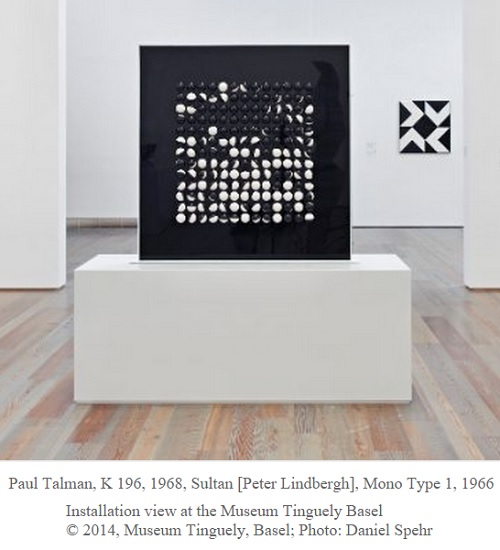
The balls in the foreground relate Sultan's work to my own.
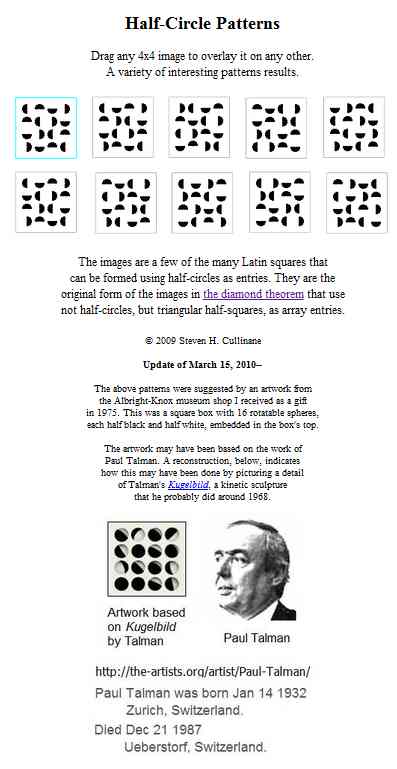
Linguistic backstory —
The art space where the pieces by Talman and by Lindbergh
were displayed is Museum Tinguely in Basel.
As the previous post notes, the etymology of "glamour" (as in
fashion photography) has been linked to "grammar" (as in
George Steiner's Grammars of Creation ). A sculpture by
Tinguely (fancifully representing Heidegger) adorns one edition
of Grammars .
Yale University Press, 2001:

Tinguely, "Martin Heidegger,
Philosopher," sculpture, 1988
Comments Off on Art Space
Friday, May 5, 2017
"… I know for sure that my best insights (those which
are not just routine calculations) are pre-linguistic, and
I struggle to put them into words . . . ."
— Peter J. Cameron today
See also "George Steiner" + Language in this journal.
A related figure —

Comments Off on Pre-Linguistic Thought
Thursday, May 4, 2017

From a post on April 1, the reported date of his death —

Comments Off on In Memory of Burton Watson
Tuesday, May 2, 2017
Comments Off on Image Albums
Saturday, April 29, 2017
A book cover from Amazon.com —

See also this journal on the above date, September 27, 2016 —
Chomsky and Levi-Strauss in China,
Or: Philosophy for Jews.
Some other remarks related to the figure on the book cover —
Field Theology and Galois Window.
* See Synchronology in this journal.
Comments Off on For the Church of Synchronology*
Friday, April 28, 2017
The title is from Don McLean's classic "American Pie."
A Finite Projective Space —

A Non-Finite Projective Space —

Comments Off on A Generation Lost in Space
Thursday, April 27, 2017

See also a figure from 2 AM ET April 26 …

" Partner, anchor, decompose. That's not math.
That's the plot to 'Silence of the Lambs.' "
— Greg Gutfeld, September 2014

Comments Off on Partner, Anchor, Decompose
Wednesday, April 26, 2017

See also "Cornerstone" in this journal and …
A sidebar from a Google search today —


This suggests a review of posts now tagged Obelisk,
which include …

Comments Off on Again
A sketch, adapted tonight from Girl Scouts of Palo Alto —

From the April 14 noon post High Concept —

From the April 14 3 AM post Hudson and Finite Geometry —

From the April 24 evening post The Trials of Device —


Note that Hudson’s 1905 “unfolding” of even and odd puts even on top of
the square array, but my own 2013 unfolding above puts even at its left.
Comments Off on A Tale Unfolded
Monday, April 24, 2017
"A blank underlies the trials of device"
— Wallace Stevens, "An Ordinary Evening in New Haven" (1950)
A possible meaning for the phrase "the trials of device" —

See also Log24 posts mentioning a particular device, the pentagram .
For instance —

Related figures —


Comments Off on The Trials of Device
Friday, April 21, 2017
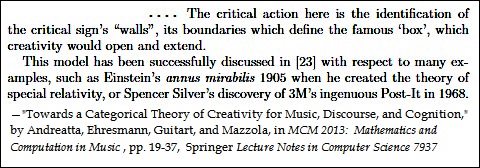
A box from the annus mirabilis —
See Hudson's 4×4 array.
Related material —

Comments Off on Music Box
Thursday, April 20, 2017

See also "Romancing the Omega" —

Related mathematics — Guitart in this journal —

See also Weyl + Palermo in this journal —

Comments Off on Stone Logic

A footnote from page 229 of Sydney Padua’s April 21, 2015, book
on Lovelace and Babbage —

Comments Off on Point Zero
Sunday, April 16, 2017

See also Plan 9.

Comments Off on Homily

This post’s title is from the tags of the previous post —

The title’s “shift” is in the combined concepts of …
Space and Number
From Finite Jest (May 27, 2012):
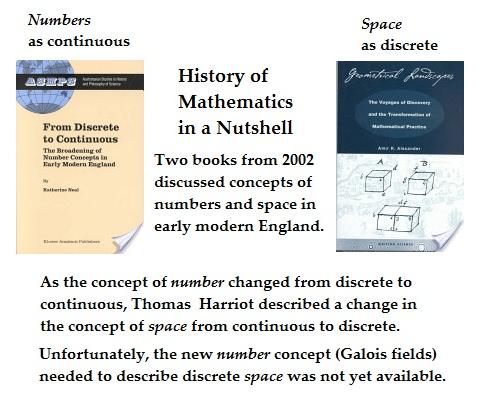
The books pictured above are From Discrete to Continuous ,
by Katherine Neal, and Geometrical Landscapes , by Amir Alexander.
For some details of the shift, see a Log24 search for Boole vs. Galois.
From a post found in that search —
“Benedict Cumberbatch Says
a Journey From Fact to Faith
Is at the Heart of Doctor Strange“
— io9 , July 29, 2016
” ‘This man comes from a binary universe
where it’s all about logic,’ the actor told us
at San Diego Comic-Con . . . .
‘And there’s a lot of humor in the collision
between Easter [ sic ] mysticism and
Western scientific, sort of logical binary.’ “
[Typo now corrected, except in a comment.]
Comments Off on Art Space Paradigm Shift
Friday, April 14, 2017

The above four-element sets of black subsquares of a 4×4 square array
are 15 of the 60 Göpel tetrads , and 20 of the 80 Rosenhain tetrads , defined
by R. W. H. T. Hudson in his 1905 classic Kummer's Quartic Surface .
Hudson did not view these 35 tetrads as planes through the origin in a finite
affine 4-space (or, equivalently, as lines in the corresponding finite projective
3-space).
In order to view them in this way, one can view the tetrads as derived,
via the 15 two-element subsets of a six-element set, from the 16 elements
of the binary Galois affine space pictured above at top left.
This space is formed by taking symmetric-difference (Galois binary)
sums of the 15 two-element subsets, and identifying any resulting four-
element (or, summing three disjoint two-element subsets, six-element)
subsets with their complements. This process was described in my note
"The 2-subsets of a 6-set are the points of a PG(3,2)" of May 26, 1986.
The space was later described in the following —


Comments Off on Hudson and Finite Geometry
Wednesday, April 12, 2017
The contraction of the title is from group actions on
the ninefold square (with the center subsquare fixed)
to group actions on the eightfold cube.
From a post of June 4, 2014 …
At math.stackexchange.com on March 1-12, 2013:
“Is there a geometric realization of the Quaternion group?” —

The above illustration, though neatly drawn, appeared under the
cloak of anonymity. No source was given for the illustrated group actions.
Possibly they stem from my Log24 posts or notes such as the Jan. 4, 2012,
note on quaternion actions at finitegeometry.org/sc (hence ultimately
from my note “GL(2,3) actions on a cube” of April 5, 1985).
Comments Off on Contracting the Spielraum
Cézanne's Greetings.
"Cézanne ignores the laws of classical perspective . . . ."
— Voorhies, James. “Paul Cézanne (1839–1906).”
In Heilbrunn Timeline of Art History . New York:
The Metropolitan Museum of Art, 2000–. (October 2004)
Some others do not.


This is what I called "the large Desargues configuration"
in posts of April 2013 and later.
Comments Off on Expanding the Spielraum
Monday, April 10, 2017

From this journal on August 7, 2010 (footnotes added today) —
|
The title of this post, "Rift Designs," … is taken from Heidegger.
From a recent New Yorker review of Absence of Mind by Marilynne Robinson—
"Robinson is eloquent in her defense of the mind’s prerogatives, but her call for a renewed metaphysics might be better served by rereading Heidegger than by dusting off the Psalms."
Following this advice, we find—
"Propriation1 gathers the rift-design2 of the saying and unfolds it3 in such a way that it becomes the well-joined structure4 of a manifold showing."
— p. 415 of Heidegger's Basic Writings , edited by David Farrell Krell, HarperCollins paperback, 1993
"Das Ereignis versammelt den Aufriß der Sage und entfaltet ihn zum Gefüge des vielfältigen Zeigens."
— Heidegger, Weg zur Sprache
1. "Mirror-Play of the Fourfold"
2. "Christ descending into the abyss"
3. Barrancas of Cuernavaca
4. Combinatorics, Philosophy, Geometry
|
Comments Off on Heidegger for Passover
Saturday, April 8, 2017
The title is from Hume:
"And were all my perceptions removed by death,
and could I neither think, nor feel, nor see, nor love,
nor hate, after the dissolution of my body, I should
be entirely annihilated, nor do I conceive what is
further requisite to make me a perfect nonentity."
— Book I, Part IV, Section vi of
A Treatise of Human Nature
"What is further requisite" — Perhaps …

This four-dot notation ("as") is from a search for Lévi-Strauss in this journal.
See also "That I Am."
Comments Off on A Perfect Nonentity
Friday, April 7, 2017
From "The Most Notorious Section Phrases," by Sophie G. Garrett
in The Harvard Crimson on April 5, 2017 —
This passage reminds me of (insert impressive philosophy
that was not in the reading).
This student is just being a show off. We get that they are smart
and well read. Congrats, but please don’t make the rest of the us
look bad in comparison. It should be enough to do the assigned
reading without making connections to Hume’s theory of the self.
Hume on personal identity (the "self") —
|
For my part, when I enter most intimately into what I call myself, I always stumble on some particular perception or other, of heat or cold, light or shade, love or hatred, pain or pleasure. I never can catch myself at any time without a perception, and never can observe any thing but the perception. When my perceptions are removed for any time, as by sound sleep, so long am I insensible of myself, and may truly be said not to exist. And were all my perceptions removed by death, and could I neither think, nor feel, nor see, nor love, nor hate, after the dissolution of my body, I should be entirely annihilated, nor do I conceive what is further requisite to make me a perfect nonentity.
. . . .
I may venture to affirm of the rest of mankind, that they are nothing but a bundle or collection of different perceptions, which succeed each other with an inconceivable rapidity, and are in a perpetual flux and movement. Our eyes cannot turn in their sockets without varying our perceptions. Our thought is still more variable than our sight; and all our other senses and faculties contribute to this change: nor is there any single power of the soul, which remains unalterably the same, perhaps for one moment. The mind is a kind of theatre, where several perceptions successively make their appearance; pass, repass, glide away, and mingle in an infinite variety of postures and situations. There is properly no simplicity in it at one time, nor identity in different, whatever natural propension we may have to imagine that simplicity and identity. The comparison of the theatre must not mislead us. They are the successive perceptions only, that constitute the mind; nor have we the most distant notion of the place where these scenes are represented, or of the materials of which it is composed.
|
Related material —
Imago Dei in this journal.

Backstory —
The previous post
and The Crimson Abyss.
Comments Off on Personal Identity
Tuesday, April 4, 2017
"Plan 9 deals with the resurrection of the dead."
— Bill Murray in "Ed Wood"

For The Church of Plan 9
(The plan , as well as the elevation ,
of the above structure is a 3×3 grid.)
Comments Off on Plan 9 Continues
Monday, April 3, 2017
Comments Off on Even Core
Saturday, April 1, 2017

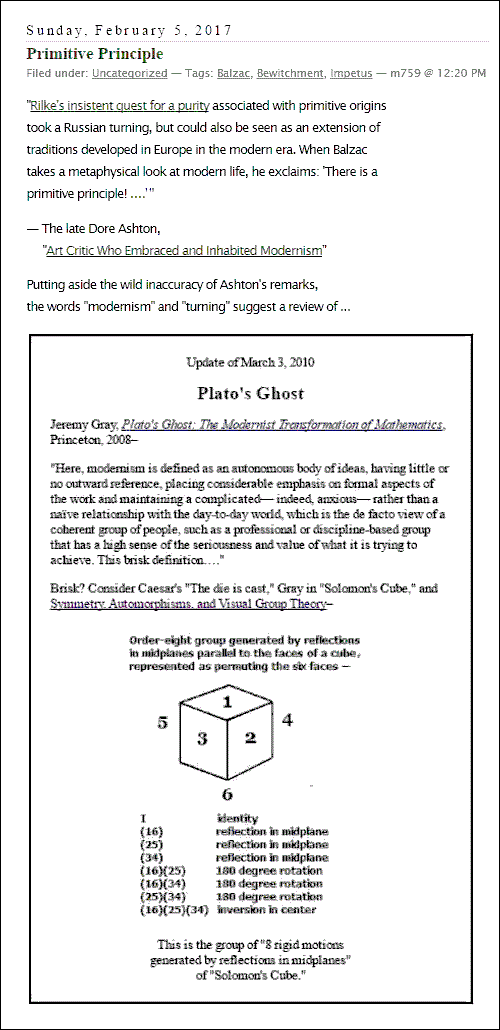
Prequel —

Note that Yale's die design and use of the phrase "rigid motions"
differ from those in the webpage "Solomon's Cube."
Comments Off on Beyond All Recognition
(Continued)
Click image for some backstory.

“Whatever he drew was the platonic ideal
of what a cartoon should look like.”
— Bob Mankoff on Jack Ziegler, who reportedly
died on Wednesday, March 29, 2017.
See also "Hexagram 64 in Context," March 16, 2017.
Comments Off on Art Space
Wednesday, March 29, 2017
"And as the characters in the meme twitch into the abyss
that is the sky, this meme will disappear into whatever
internet abyss swallowed MySpace."
—Staff writer Kamila Czachorowski, Harvard Crimson , March 29
1984 —

2010 —

Logo design for Stack Exchange Math by Jin Yang
Recent posts now tagged Crimson Abyss suggest
the above logo be viewed in light of a certain page 29 —
"… as if into a crimson abyss …." —

Update of 9 PM ET March 29, 2017:
Prospero's Children was first published by HarperCollins,
London, in 1999. A statement by the publisher provides
an instance of the famous "much-needed gap." —
"This is English fantasy at its finest. Prospero’s Children
steps into the gap that exists between The Lion, the Witch
and the Wardrobe and Clive Barker’s Weaveworld , and
is destined to become a modern classic."
Related imagery —


See also "Hexagram 64 in Context" (Log24, March 16, 2017).
Comments Off on The Crimson Abyss
Another view of the previous post's art space —

More generally, see Solomon's Cube in Log24.
See also a remark from Stack Exchange in yesterday's post Backstory,
and the Stack Exchange math logo below, which recalls the above
cube arrangement from "Affine groups on small binary spaces" (1984).
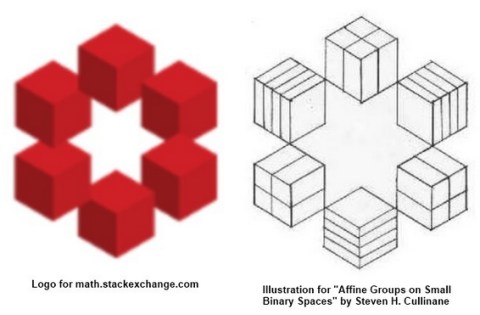
Comments Off on Art Space Illustrated
Tuesday, March 28, 2017
From Log24, "Cube Bricks 1984" —


Also on March 9, 2017 —

For those who prefer graphic art —
Broken Symmetries in Diamond Space —

Comments Off on Bit by Bit
Click here to enlarge. Click the image for the source page.

The "this page" reference is to …
Finite Geometry of the Square and Cube.
Also from March 14, 2017 —

Related material —

Comments Off on Backstory
Sunday, March 26, 2017

From a search in this journal for Seagram + Tradition —

Related art: Saturday afternoon's Twin Pillars of Symmetry.
Comments Off on Seagram Studies
Saturday, March 25, 2017
The phrase "twin pillars" in a New York Times Fashion & Style
article today suggests a look at another pair of pillars —

This pair, from the realm of memory, history, and geometry disparaged
by the late painter Mark Rothko, might be viewed by Rothko
as "parodies of ideas (which are ghosts)." (See the previous post.)
For a relationship between a 3-dimensional simplex and the {4, 3, 3},
see my note from May 21, 2014, on the tetrahedron and the tesseract.
Comments Off on Twin Pillars of Symmetry
… Continued from April 11, 2016, and from …


A tribute to Rothko suggested by the previous post —

For the idea of Rothko's obstacles, see Hexagram 39 in this journal.
Comments Off on Like Decorations in a Cartoon Graveyard
Wednesday, March 22, 2017
On a psychotherapist who died at 86 on Monday —
"He studied mathematics and statistics at the Courant Institute,
a part of New York University — he would later write … a
mathematical fable, Numberland (1987)."
— The New York Times online this evening

|
This wry parable by a psychotherapist contains one basic message: though death is inevitable, each moment in life is to be cherished. In the orderly but sterile kingdom of Numberland, digits live together harmoniously under a rigid president called The Professor. Their stable society is held intact by the firm conviction that they are immortal: When has a number ever died? This placid universe is plunged into chaos when the inquisitive hero SIX crosses over into the human world and converses with a young mathematician. This supposedly impossible transition convinces the ruling hierarchy that if SIX can talk to a mortal, then the rest of the numbers are, after all, mortal. The digits conclude that any effort or achievement is pointless in the face of inevitable death, and the cipher society breaks down completely. The solution? Banish SIX to the farthest corners of kingdom. Weinberg (The Heart of Psychotherapy ) uses his fable to gently satirize the military, academics, politicians and, above all, psychiatrists. But his tale is basically inspirational; a triumphant SIX miraculously returns from exile and quells the turmoil by showing his fellow digits that knowledge of one's mortality should enrich all other experiences and that death ultimately provides a frame for the magnificent picture that is life.
Copyright 1987 Reed Business Information, Inc.
|
See also The Prisoner in this journal.
Comments Off on The Story of Six
Tuesday, March 21, 2017
From The Poetic Quotidian, a journal of quotations—

See also, in this journal, New Haven + Grid.

Comments Off on Res Ipsa
A roundup of posts now tagged "Apollo Psi" led to the name
Evan Harris Walker in the post Dirac and Geometry of
Dec. 14, 2015. That post mentions …
"… Evan Harris Walker’s ingenious theory of
the psi force, a theory that assigned psi
both positive and negative values in such a way
that the mere presence of a skeptic in the near
vicinity of a sensitive psychic investigation could
force null results. Neat, Dr. Walker, thought
Peter Slater— neat, and totally without content."
— From the 1983 novel Broken Symmetries
by Paul Preuss
It turns out that Walker died "on the evening of August 17, 2006."
From this journal on that date —
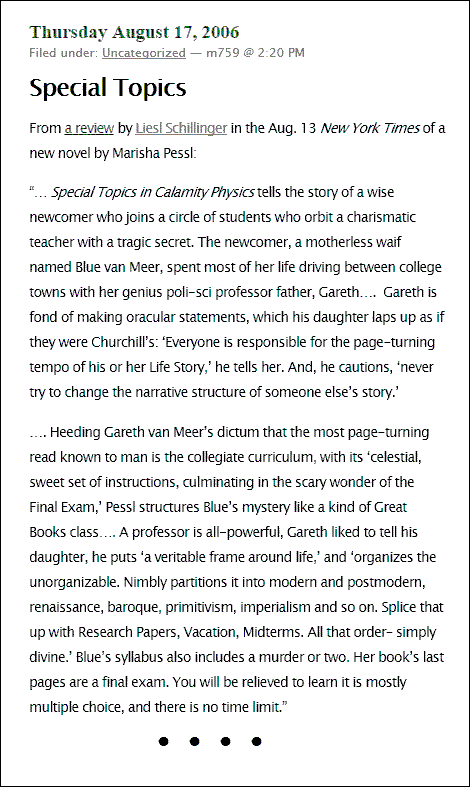
Comments Off on Special Topics
Monday, March 20, 2017
Comments Off on Rothko 101
Sunday, March 19, 2017

Click image for a search.
* Parent company of Westworld.
See also Delos in this journal.
Comments Off on Delos Incorporated* Sunday School
Friday, March 17, 2017
(A sequel to the previous post, Narrative for Westworld)
"That corpse you planted last year . . . ." — T. S. Eliot

Circle and Square at the Court of King Minos —

Harmonic analysis based on the circle involves the
circular functions. Dyadic harmonic analysis involves …

For some related history, see (for instance) E. M. Stein
on square functions in a 1982 AMS Bulletin article.
Comments Off on To Coin a Phrase
“That corpse you planted
last year in your garden,
Has it begun to sprout?
Will it bloom this year?
Or has the sudden frost
disturbed its bed?”
— T. S. Eliot, “The Waste Land“


Click the book for a video.
Comments Off on Narrative for Westworld
Thursday, March 16, 2017

"Always with a little humor." — Dr. Yen Lo
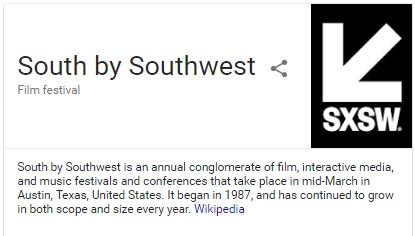
Comments Off on Hexagram 64 in Context
Tuesday, March 14, 2017
Friday, March 10, 2017
Or: Y for Yale continued


See also Transformers in this journal and Y for Yale.
Comments Off on Transformers
Thursday, March 9, 2017
Comments Off on One Eighth
Wednesday, March 8, 2017
"The particulars of attention,
whether subjective or objective,
are unshackled through form,
and offered as a relational matrix …."
— Kent Johnson in a 1993 essay
Illustration —

Commentary —
|
The 16 Dirac matrices form six anticommuting sets of five matrices each (Arfken 1985, p. 214):
1.  , ,  , ,  , ,  , ,  , ,
2.  , ,  , ,  , ,  , ,  , ,
3.  , ,  , ,  , ,  , ,  , ,
4.  , ,  , ,  , ,  , ,  , ,
5.  , ,  , ,  , ,  , ,  , ,
6.  , ,  , ,  , ,  , ,  . .
SEE ALSO: Pauli Matrices
REFERENCES:
Arfken, G. Mathematical Methods for Physicists, 3rd ed. Orlando, FL: Academic Press, pp. 211-217, 1985.
Berestetskii, V. B.; Lifshitz, E. M.; and Pitaevskii, L. P. "Algebra of Dirac Matrices." §22 in Quantum Electrodynamics, 2nd ed. Oxford, England: Pergamon Press, pp. 80-84, 1982.
Bethe, H. A. and Salpeter, E. Quantum Mechanics of One- and Two-Electron Atoms. New York: Plenum, pp. 47-48, 1977.
Bjorken, J. D. and Drell, S. D. Relativistic Quantum Mechanics. New York: McGraw-Hill, 1964.
Dirac, P. A. M. Principles of Quantum Mechanics, 4th ed. Oxford, England: Oxford University Press, 1982.
Goldstein, H. Classical Mechanics, 2nd ed. Reading, MA: Addison-Wesley, p. 580, 1980.
Good, R. H. Jr. "Properties of Dirac Matrices." Rev. Mod. Phys. 27, 187-211, 1955.
Referenced on Wolfram|Alpha: Dirac Matrices
CITE THIS AS:
Weisstein, Eric W. "Dirac Matrices."
From MathWorld— A Wolfram Web Resource.
http://mathworld.wolfram.com/DiracMatrices.html
|
Comments Off on Inscapes
Sunday, March 5, 2017
Comments Off on The Omega Matrix
Saturday, March 4, 2017
New York Times headline about a death
on Friday, March 3, 2017 —
René Préval, President of Haiti
in 2010 Quake, Dies at 74
See also …


This way to the egress.
Comments Off on At 74
Thursday, March 2, 2017
"We tell ourselves stories in order to live." — Joan Didion
The New York Times Magazine online today —

"As a former believer and now a nonbeliever, Carrère,
seeking answers, sets out, in The Kingdom , to tell
the story of the storytellers. He is trying to understand
what it takes to be able to tell a story, any story.
And what he finds, once again, is that you have to find
your role in it."
— Wyatt Mason in The New York Times Magazine ,
online March 2, 2017
Like Tom Hanks?

Click image for related posts.
Comments Off on Stories
Sunday, February 26, 2017
Transformations acting on Solomon's Cube
furnish a model of poetic order.
Some backstory for Hollywood —


Comments Off on Poetic Order
Friday, February 24, 2017
An arXiv article from Good Friday, 2003, by Igor Dolgachev,
a student of the late Igor Shafarevich (see previous post) —

See also my Dec. 29, 1986, query on Duality and Symmetry.
Comments Off on Abstract Configurations on Good Friday
Tuesday, February 21, 2017
… Also known as quaternion —

"Diagram of an 8 leaf gathering: Quaternion (8 folio or leaf gathering).
A quaternion is composed of 4 bifolios. Conjugate folios form a bifolio
at either end of a gathering or quire. So in the diagram above folios
1 and 8 which form a bifolio are conjugate folios."
— http://employees.oneonta.edu/farberas/arth/arth214_folder/workshop.htm
The source:
SUNY Oneonta
ARTH 214
History of Northern Renaissance Art
Spring, 2013
Dr. Allen Farber, Associate Professor
Tuesday, February 26: From Workshop to Chamber:
The Paris Book Industry of the Early Fifteenth Century
"Images for class" folder
Synchronology:
An image from Publication, a Log24 post on the above date,
Feb. 26, 2013 —
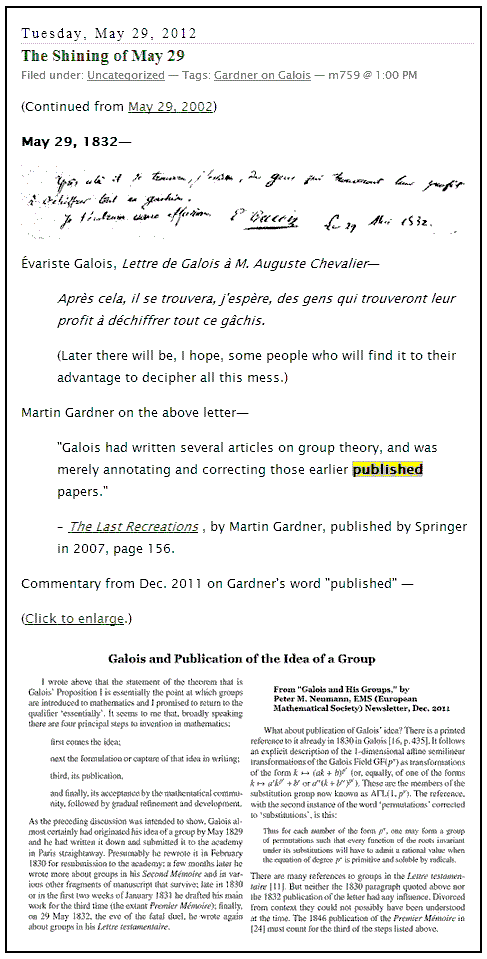
Comments Off on Tetradion …
Monday, February 20, 2017
Mathematics —
Hudson's parametrization of the
4×4 square, published in 1905:

A later parametrization, from this date in 1986:

A note from later in 1986 shows the equivalence of these
two parametrizations:
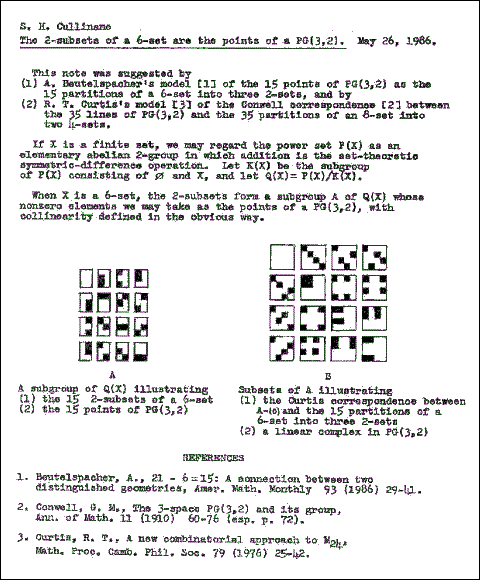
Narrative —
Posts tagged Memory-History-Geometry.
The mathematically challenged may prefer the narrative of the
Creation Matrix from the religion of the Transformers:
"According to religious legend, the core of the Matrix
was created from Solomus, the god of wisdom,
trapped in the form of a crystal by Mortilus, the god
of death. Following the defeat of Mortilus, Solomus
managed to transform his crystal prison into the Matrix—
a conduit for the energies of Primus, who had himself
transformed into the life-giving computer Vector Sigma."
Comments Off on Mathematics and Narrative
Sunday, February 19, 2017
Saturday, February 18, 2017
Peter Woit today discusses a book by one Zeeya Merali:

Some earlier remarks by Merali:

Zeeya Merali in Nature on 28 August 2013 —
"… a small band of researchers who think that
the usual ideas are not yet strange enough.
If nothing else, they say, neither of the two great
pillars of modern physics — general relativity,
which describes gravity as a curvature of space
and time, and quantum mechanics, which governs
the atomic realm — gives any account for
the existence of space and time.
. . . .
'All our experiences tell us we shouldn't have two
dramatically different conceptions of reality —
there must be one huge overarching theory,' says
Abhay Ashtekar, a physicist at Pennsylvania State
University in University Park."
See as well Overarching and Doctor Strange in this journal.
Comments Off on Not Strange Enough?
See Hanks + Cube in this journal … For instance …
Comments Off on Solid Symmetry (continued)
The Log24 version (Nov. 9, 2005, and later posts) —
The Warner Brothers version —

The Paramount version —

See also related material in the previous post, Transformers.
Comments Off on Verbum
Friday, February 17, 2017
"Bertram Kostant, professor emeritus of mathematics at MIT,
died at the Hebrew Senior Rehabilitation Center in Roslindale,
Massachusetts, on Thursday, Feb. 2, at the age of 88."
— MIT News, story dated Feb. 16, 2017
See also a search for Kostant in this journal.
Regarding the discussions of symmetries and "facets" found in
that search —
Kostant:
“A word about E(8). In my opinion, and shared by others,
E(8) is the most magnificent ‘object’ in all of mathematics.
It is like a diamond with thousands of facets. Each facet
offering a different view of its unbelievable intricate internal
structure.”
Cullinane:
In the Steiner system S(5, 8, 24) each octad might be
regarded as a "facet," with the order of the system's
automorphism group, the Mathieu group M24 , obtained
by multiplying the number of such facets, 759, by the
order of the octad stabilizer group, 322,560.
Analogously …

Comments Off on Kostant Is Dead
In the recent science fiction film "Arrival," Amy Adams portrays
a linguist, Louise Banks, who must learn to translate the language of
aliens ("Heptapods") who have just arrived in their spaceships.
The point of this tale seems to have something to do with Banks
learning, along with the aliens' language, their skill of seeing into
the future.
Louise Banks wannabes might enjoy the works of one
Metod Saniga, who thinks that finite geometry might have
something to do with perceptions of time.
See Metod Saniga, “Algebraic Geometry: A Tool for Resolving
the Enigma of Time?”, in R. Buccheri, V. Di Gesù and M. Saniga (eds.),
Studies on the Structure of Time: From Physics to Psycho(patho)logy,
Kluwer Academic / Plenum Publishers, New York, 2000, pp. 137–166.
Available online at www.ta3.sk/~msaniga/pub/ftp/mathpsych.pdf .
Although I share an interest in finite geometry with Saniga —
see, for instance, his remarks on Conwell heptads in the previous post
and my own remarks in yesterday's post "Schoolgirls and Heptads" —
I do not endorse his temporal speculations.
Comments Off on Heptads and Heptapods
Thursday, February 16, 2017
Two views of nested sequences of projective structures —
From this journal in April 2013:

From the arXiv in September 2014 —

Saniga's reference [6] is to a paper submitted to the arXiv in May 2014.
My own note of April 30, 2013, concludes with an historical reference
that indicates the mathematics underlying both my own and Saniga's
remarks —
The exercises at the end of Ch. II in Veblen and Young's
Projective Geometry, Vol. I (Ginn, 1910). For instance:

Comments Off on Nested Projective Structures
A Feb. 12 note in the "talk" section of the Wikipedia article
"Kirkman's schoolgirl problem" —

The illustration above was replaced by a new section in the article,
titled "Galois geometry."
The new section improves the article by giving it greater depth.
For related material, see Conwell Heptads in this journal
(or, more generally, Conwell) and a 1985 note citing Conwell's work.
Comments Off on Schoolgirls and Heptads
Wednesday, February 15, 2017

Space —

Space structure —
From Gotay and Isenberg, “The Symplectization of Science,”
Gazette des Mathématiciens 54, 59-79 (1992):
“… what is the origin of the unusual name ‘symplectic’? ….
Its mathematical usage is due to Hermann Weyl who,
in an effort to avoid a certain semantic confusion, renamed
the then obscure ‘line complex group’ the ‘symplectic group.’
… the adjective ‘symplectic’ means ‘plaited together’ or ‘woven.’
This is wonderfully apt….”

The above symplectic figure appears in remarks on
the diamond-theorem correlation in the webpage
Rosenhain and Göpel Tetrads in PG(3,2).
Space shuttle —

Related ethnic remarks —

… As opposed to Michael Larsen —

Funny, you don't look Danish.
Comments Off on Warp and Woof
Tuesday, February 14, 2017
For the late poet Thomas Lux ,
who reportedly died on February 5
(See posts tagged Bewitchment) —
"A darker riddle with no answer looms . . . .
For those who linger on among the tombs"
— John Hollander, from a poem in A Draft of Light
Those who enjoy dark riddles with no answers
may search the Web for "Sefer Yetzirah" + Cube.
I prefer a purely mathematical approach to the cube.
Comments Off on Rhyme
Sunday, February 12, 2017
Euclidean square and triangle—

Galois square and triangle—

For some backstory, see the "preface" of the
previous post and Soifer in this journal.
Comments Off on Religious Art for Sunday
Wednesday, February 8, 2017

On the triangle in the excerpt above —
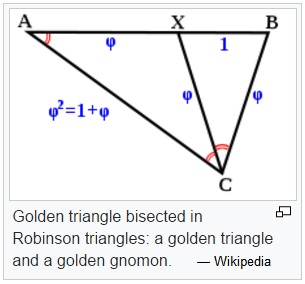
"A golden triangle can be split into
a golden triangle and a golden gnomon.
The same is true for a golden gnomon.
A golden gnomon and a golden triangle
with their equal sides matching each other
in length are also referred to as the obtuse
and acute Robinson triangles.
These isosceles triangles can be used to
produce Penrose tilings."
— Adapted from Wikipedia (Wikipedia's word
"bisected" is replaced above by the word "split.")
The previous post dealt with women and lies.
Related material — Quilt Prize in this journal.
Comments Off on Rhymes with Prize
Sunday, February 5, 2017
"Rilke's insistent quest for a purity associated with primitive origins
took a Russian turning, but could also be seen as an extension of
traditions developed in Europe in the modern era. When Balzac
takes a metaphysical look at modern life, he exclaims: 'There is a
primitive principle! . . . .' "
— The late Dore Ashton,
"Art Critic Who Embraced and Inhabited Modernism"
Putting aside the wild inaccuracy of Ashton's remarks,
the words "modernism" and "turning" suggest a review of …

Comments Off on Primitive Principle
Saturday, February 4, 2017

See also "Universal" in this journal.
Comments Off on Universality
Sunday, January 29, 2017
For some backstory, see Lottery in this journal,
esp. a post of June 28, 2007:
Real Numbers: An Object Lesson.
One such number, 8775, is suggested by
a Heinlein short story in a Jan. 25 post.
A search today for that number —

That Jan. 25 post, "For Your Consideration," also mentions logic.
Logic appears as well within a post from the above "8775" date,
August 16, 2016 —
|
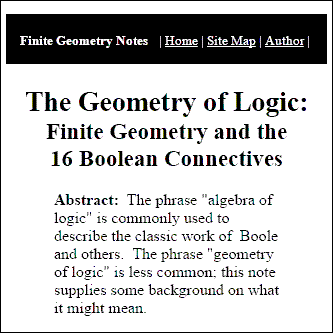
Update of 10 am on August 16, 2016 —
See also Atiyah on the theology of
(Boolean) algebra vs. (Galois) geometry:

|
Related: Remarks by Charles Altieri on Wittgenstein in
today's previous post.
For remarks by Wittgenstein related to geometry and logic, see
(for instance) "Logical space" in "A Wittgenstein Dictionary," by
Hans-Johann Glock (Wiley-Blackwell, 1996).
Comments Off on Lottery Hermeneutics
Friday, January 27, 2017

Hurt, who reportedly died today, played a purveyor
of magic wands in the Harry Potter series and also
Control in “Tinker Tailor Soldier Spy.”
“In the original screenplay for the film adaptation
of Tinker Tailor Soldier Spy, Smiley muses that
Control had once told him that Howard Staunton
was the greatest chess master Britain had ever
produced. ‘Staunton’ later turns out to be the name
that Control used for the rental of his flat.”
— Wikipedia, Control (fictional character)
Related images —


Happy Chinese New Year.
Comments Off on In Memory of Actor John Hurt
Monday, January 16, 2017
The New York Times this evening —
"Hans Berliner, a former world champion of correspondence chess
who won one of the greatest games ever played on his way to
the title and later became a pioneering developer of game-playing
computers, died on Friday [Jan. 13th] in Riviera Beach, Fla.
He was 87."
— Dylan Loeb McClain
In memoriam —

Comments Off on Various Schemata
For the "interality" of the title, click on the tag.

Click the above image for posts tagged "The Positive."
Comments Off on Interality Illustrated
Saturday, January 14, 2017
Comments Off on The Thing and I
See Eightfold 1984 in this journal.
Related material —
"… the object sets up a kind of
frame or space or field
within which there can be epiphany."
"… Instead of an epiphany of being,
we have something like
an epiphany of interspaces."
— Charles Taylor, "Epiphanies of Modernism,"
Chapter 24 of Sources of the Self ,
Cambridge University Press, 1989
"Perhaps every science must start with metaphor
and end with algebra; and perhaps without the metaphor
there would never have been any algebra."
— Max Black, Models and Metaphors ,
Cornell University Press, Ithaca, NY, 1962
Epiphany 2017 —

Click to enlarge:

Comments Off on 1984: A Space Odyssey
Thursday, January 12, 2017
From "Solomon's Cube" —

Related material —
"Is this a dagger I see before me?"

"No." (A line suggested by Polanski's 2010 "The Ghost Writer")

Comments Off on The Cherished Gift
Monday, January 9, 2017
Click to enlarge the following (from Cornell U. Press in 1962) —

For a more recent analogical extension at Cornell, see the
Epiphany 2017 post on the eightfold cube and yesterday
evening's post "A Theory of Everything."
Comments Off on Analogical Extension at Cornell
Sunday, January 8, 2017
The title refers to the Chinese book the I Ching ,
the Classic of Changes .
The 64 hexagrams of the I Ching may be arranged
naturally in a 4x4x4 cube. The natural form of transformations
("changes") of this cube is given by the diamond theorem.
A related post —

Comments Off on A Theory of Everything
Saturday, January 7, 2017
"Clearly, there is a spirit of openhandedness in post-conceptual art
uses of the term 'Conceptualism.' We can now endow it with a
capital letter because it has grown in scale from its initial designation
of an avant-garde grouping, or various groups in various places, and
has evolved in two further phases. It became something like a movement,
on par with and evolving at the same time as Minimalism. Thus the sense
it has in a book such as Tony Godfrey’s Conceptual Art. … Beyond that,
it has in recent years spread to become a tendency, a resonance within
art practice that is nearly ubiquitous." — Terry Smith, 2011
See also the eightfold cube —

Comments Off on Conceptualist Minimalism
Friday, January 6, 2017
The assignments page for a graduate algebra course at Cornell
last fall had a link to the eightfold cube:

Comments Off on Eightfold Cube at Cornell
Wednesday, January 4, 2017
According to art historian Rosalind Krauss in 1979,
the grid's earliest employers
"can be seen to be participating in a drama
that extended well beyond the domain of art.
That drama, which took many forms, was staged
in many places. One of them was a courtroom,
where early in this century, science did battle with God,
and, reversing all earlier precedents, won."
The previous post discussed the 3×3 grid in the context of
Krauss's drama. In memory of T. S. Eliot, who died on this date
in 1965, an image of the next-largest square grid, the 4×4 array:

See instances of the above image.
Comments Off on A Drama of Many Forms
Tuesday, January 3, 2017
The image of art historian Rosalind Krauss in the previous post
suggests a review of a page from her 1979 essay "Grids" —

The previous post illustrated a 3×3 grid. That cultist space does
provide a place for a few "vestiges of the nineteenth century" —
namely, the elements of the Galois field GF(9) — to hide.
See Coxeter's Aleph in this journal.
Comments Off on Cultist Space
Monday, January 2, 2017
Screenshot of 11:07 PM ET tonight —

A sample of his work —

An antidote to Berger's remarks —

Comments Off on John Berger Has Died
The Hollywood Reporter —
"William Christopher, best known for playing Father Mulcahy
on the hit sitcom M*A*S*H , died Saturday [Dec. 31, 2016] of
lung cancer, his agent confirmed to The Hollywood Reporter.
He was 84.
Christopher died at his home in Pasadena, with his wife by
his bedside, at 5:10 a.m. on New Year's Eve, according to a
statement from his agent."
— 5:59 PM PST 12/31/2016 by Meena Jang
Image reshown in this journal on the midnight (Eastern time)
preceding Christopher's death —

Related material —
From a Log24 search for "Deathly Hallows" —
|
Mathematics

The Fano plane block design
|
Magic

The Deathly Hallows symbol—
Two blocks short of a design.
|
Those who prefer Latin with their theology
may search this journal for "In Nomine Patris."
Comments Off on Sitcom Theology
Sunday, January 1, 2017
(Continued from a remark by art critic Peter Schjeldahl quoted here
last year on New Year's Day in the post "Art as Religion.")
"The unhurried curve got me.
It was like the horizon of a world
that made a non-world of
all of the space outside it."
— Peter Schjeldahl, "Postscript: Ellsworth Kelly,"
The New Yorker , December 30, 2015
This suggests some further material from the paper
that was quoted here yesterday on New Year's Eve —
"In teaching a course on combinatorics I have found
students doubting the existence of a finite projective
plane geometry with thirteen points on the grounds
that they could not draw it (with 'straight' lines)
on paper although they had tried to do so. Such a
lack of appreciation of the spirit of the subject is but
a consequence of the elements of formal geometry
no longer being taught in undergraduate courses.
Yet these students were demanding the best proof of
existence, namely, production of the object described."
— Derrick Breach (See his obituary from 1996.)
A related illustration of the 13-point projective plane
from the University of Western Australia:

Projective plane of order 3
(The four points on the curve
at the right of the image are
the points on the line at infinity .)
The above image is from a post of August 7, 2012,
"The Space of Horizons." A related image —
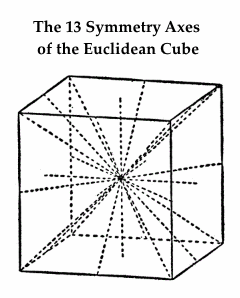
Click on the above image for further remarks.
Comments Off on Like the Horizon
« Newer Posts —
Older Posts »























































